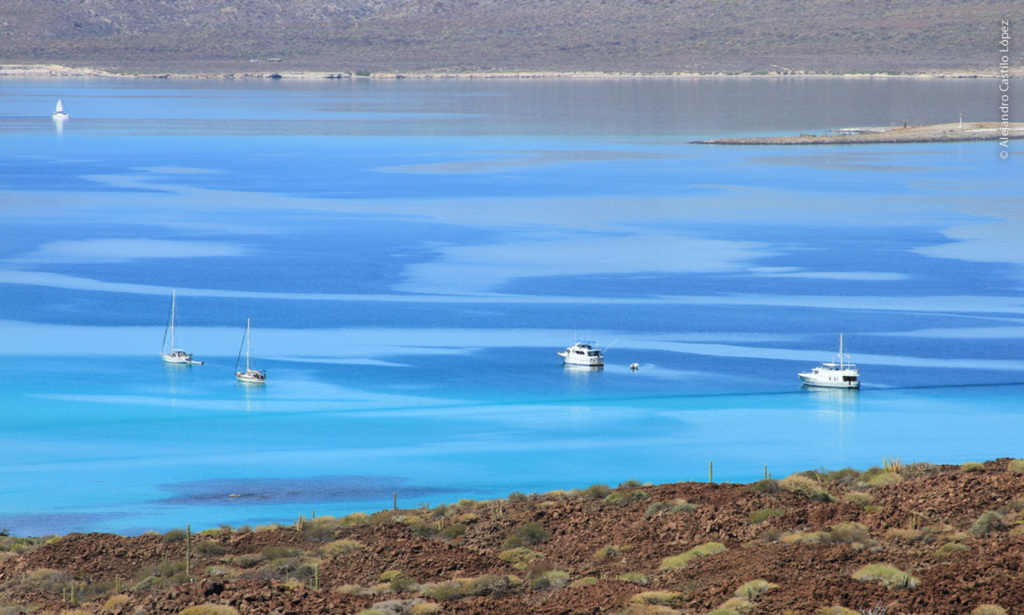Illegal, unreported and unregulated (IUU) fishing affects the sustainability of fisheries worldwide. In Mexico, illegal fishing accounts for up to an estimated 56 percent of national seafood production, according to estimates by the Environmental Defense Fund. Such a significant level of IUU product hinders market competition, threatens food security and stifles the economic viability of the local fishing sector. Under The Global Initiative Against Transnational Organized Crime Index, Mexico experiences the most illegal fishing in all of North America, Central America and the Caribbean, the Eastern Pacific and the Western Atlantic, and ranks fourteenth worldwide.
Fisheries in Mexico represent a source of livelihood for more than 295,000 people working directly in the fishing or aquaculture sector. The annual production value of the sector is approximately $1.9 billion USD and it has been growing at an annual rate of 5 percent from 2011 to 2017. Efficient monitoring, control and surveillance is key to ensuring seafood production is carried out in a law abiding and sustainable manner.
In an endeavor to design analysis-based tools that contribute to resolving public issues while strengthening relationships with the Mexican government and fishing sector, Causa Natura is leading a collaboration with Pronatura Noroeste and Global Fishing Watch to build an illegal fishing risk predictor to identify hot spots where IUU fishing might be taking place. The predictor is intended to identify spatial and temporal locations with greater susceptibility to illegal fishing and thus support implementation of more efficient inspection and surveillance strategies. This will be a tool based on data analysis and remote sensing technology intended to have a practical field application for Mexican fisheries managers to combat illegal fishing.
This collaboration incorporates data from small-scale fisheries, a sector comprising approximately 97 percent of registered vessels in Mexico. While IUU fishing occurs in both the industrial and small-scale sector, historically it has been much more difficult to acquire data for evaluating illegal fishing in the latter.
The Sistema de Localización Satelital y Seguimiento a Embarcaciones Pesqueras vessel tracking system in Mexico is only utilized by the approximately 2,000 vessels that make up the industrial fishing sector, leaving 97 percent of registered, predominantly small-scale fishing vessels in Mexico untracked and with their fishing activity not regularly monitored. This is why it’s of utmost importance to promote monitoring and analytical technologies that provide greater capacity to identify and prevent illegal fishing activity.
The first step in developing this tool will be to create an illegal fishing risk predictor specifically for the pilot site of Loreto Bay in Baja California Sur. The risk predictor will incorporate social, economic, ecologic and geographic information related to small- scale fishing events previously identified as illegal by the Comisión Nacional de Áreas Naturales Protegidas (CONANP), the Mexican federal agency in charge of administering natural protected areas. CONANP is the government institution that protects and administers natural protected areas throughout Mexico. This includes spatial and temporal information primarily of artisanal and sport fishing in the area. Next, we aim to develop a model to predict the spatial and temporal locations with greatest risks of illegal fishing incidence. Depending on data availability, we plan to adapt this tool to other areas in Mexico.
Our predictor tool will serve useful to both the government and fishing communities — facilitating the prioritization of monitoring and surveillance of areas most prone to illegal fishing — and will be of particular relevance as Mexico continues to overcome the economic effects of COVID-19. We hope that this project will additionally serve as an example of how monitoring and surveillance in the fishing sector can be strengthened with the availability of fishing and marine resource use data.
Global Fishing Watch is an international nonprofit organization committed to advancing the sustainability of our ocean through increased transparency. By harnessing cutting edge technology, our platform allows anyone to view or download data and investigate global fishing activity in near real-time, for free. GFW was founded in 2015 through a collaboration between Oceana, SkyTruth and Google. Our work is made possible thanks to the support of our funding partners and technology and data providers. globalfishingwatch.org
Causa Natura is a non-profit organization that started operations in 2014 concerned with the development of rural communities. Through applied research, communication with the use of information technologies and collaboration and advocacy, CN promotes natural resource public policies that are transparent, participatory and allow for accountability with a human rights approach.
Pronatura Noroeste is the regional representative of the National Pronatura System, the oldest and largest conservation organization in Mexico. Our mission is the conservation of flora, fauna and the priority ecosystems of Northwestern Mexico, promoting societal development that is harmonious with nature. Since 2010, Pronatura Noroeste collaborates with authorities, communities and civil organizations to increase regulations compliance within Natural Protected Areas and fishing zones. www.pronatura-noroeste.org













